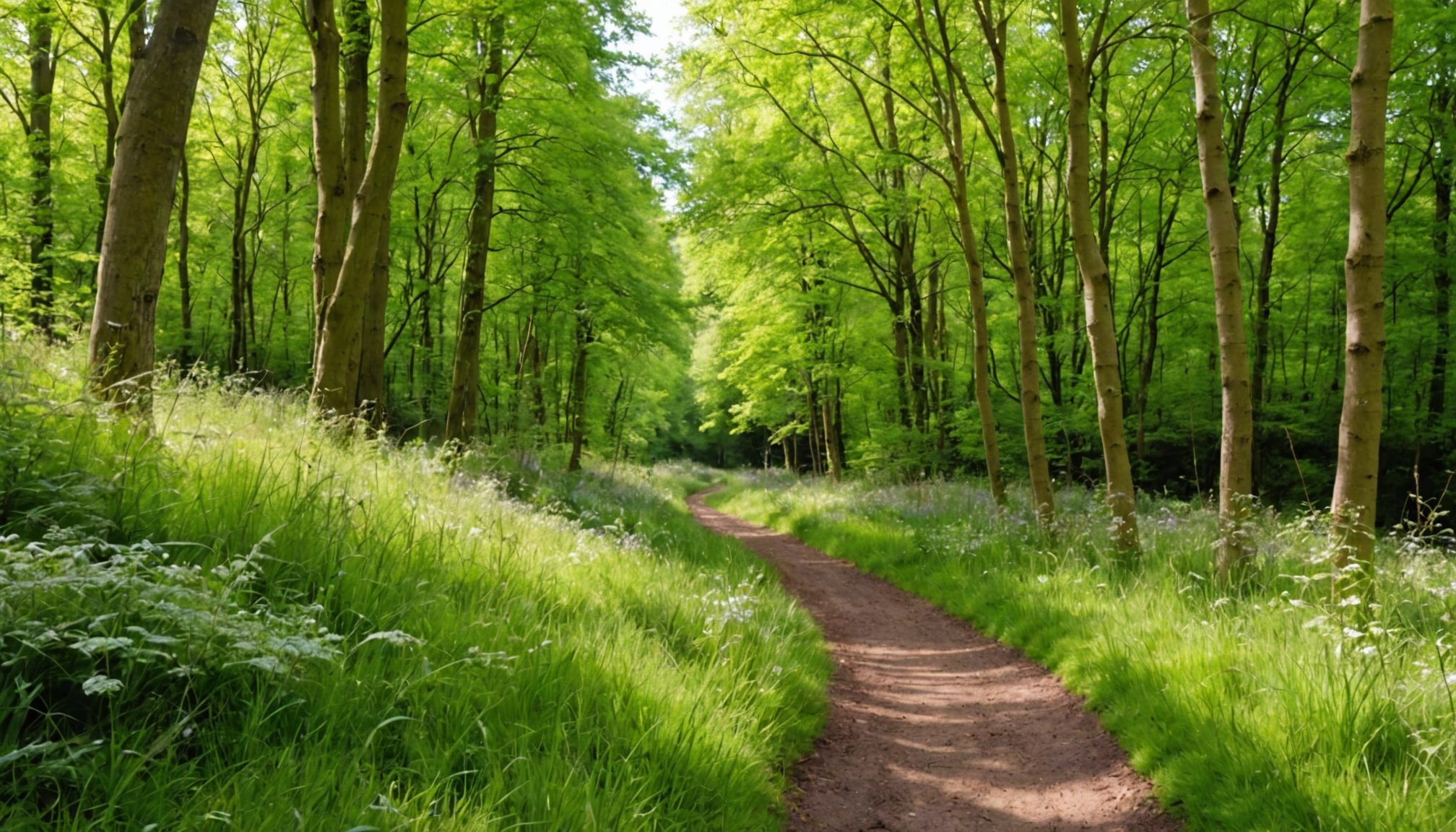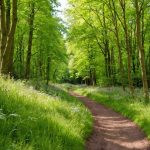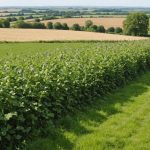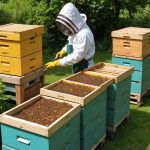Introduction to Wildlife Corridors
Wildlife corridors play a critical role in conservation strategies by maintaining ecological connectivity among fragmented habitats. These pathways allow for the safe passage of species between otherwise isolated regions, which is essential for preserving biodiversity and genetic diversity. Wildlife corridors help in reducing the impact of habitat fragmentation, one of the leading causes of species decline. They serve as lifelines for many species, enabling natural behaviors like migration, foraging, and breeding.
Ecological connectivity is the seamless connection of habitats, allowing species to move freely and adapt to environmental changes. This connectivity enhances ecosystem resilience, supporting recovery from natural disturbances and anthropogenic activities. For instance, as climate change alters habitats, many species may need to relocate to more suitable environments. Corridors facilitate these movements, becoming crucial in dynamic landscapes.
A lire en complément : Boosting Biodiversity: Innovative Hedgerow Management Strategies for UK Farmers
In the UK, many wildlife habitats face unprecedented pressures from urbanisation and agricultural expansion. These factors contribute to severe habitat fragmentation, posing significant challenges for conservationists. Existing wildlife corridors in the UK aim to tackle these challenges by reconnecting habitats and promoting ecological integrity. Conservation strategies are increasingly incorporating wildlife corridors to mitigate the adverse effects of human activities, preserving the nation’s rich biodiversity for future generations. This strategic focus aligns well with the global efforts toward sustainable ecosystem management.
Ecological Benefits of Wildlife Corridors
Wildlife corridors offer compelling ecological benefits by facilitating species movement and enhancing overall biodiversity. These natural passageways allow animals to move across fragmented landscapes, which is crucial for maintaining ecological balance.
Cela peut vous intéresser : Empowering UK Communities: Simple Ways to Support the Preservation of Local Orchid Species
One of the most significant impacts of these corridors is their role in supporting the recovery of biodiversity. By connecting isolated habitats, wildlife corridors provide the necessary pathways for animals to survive and thrive—especially endangered species. When these species can safely traverse from one area to another, they are better equipped to find resources, such as food and mates, thus reducing the risk of inbreeding and extinction.
Enhancing genetic diversity is another critical function of wildlife corridors. They enable more extensive gene flow between animal populations, which is vital for the long-term resilience and adaptability of species. In the absence of such corridors, isolated populations may suffer genetic bottleneck effects, leading to decreased vitality and increased vulnerability to environmental changes.
Beyond supporting individual species, the establishment of wildlife corridors helps to sustain entire ecosystems, stabilising tree populations and preserving predator-prey relationships, thereby ensuring robust ecological health. These corridors, thus, act as lifelines that connect fragmented habitats, fostering healthier and more biodiverse environments.
Strategies for Establishing Wildlife Corridors
Wildlife corridors play a crucial role in promoting biodiversity and supporting sustainable ecosystems. The development of effective corridors requires meticulous corridor design and proactive community involvement. Here, we delve into key aspects of planning strategies to establish these vital ecological connectors.
Identifying Key Habitats
To begin, pinpointing essential habitats is foundational. Mapping local habitats accurately helps in understanding the landscape and ecological needs. This step informs the criteria for selecting priority areas, ensuring that corridors connect vital habitats efficiently. Enlisting the expertise of local ecological experts is invaluable. Their knowledge enhances the precision of the mapping process and ensures that the most critical areas are identified.
Community Engagement and Education
A well-informed community is a powerful ally in corridor planning. Raising awareness about wildlife corridors fosters support and action. Using strategies like public consultations, social media campaigns, and neighbourhood meetings can galvanize community involvement. Such engagement not only aids planning but also ensures a sustained commitment. Educational programs and workshops play an essential role, providing platforms for residents to learn and contribute ideas, reinforcing the communal responsibility towards preserving biodiversity.
Implementation Techniques
Ultimately, implementing corridors requires a blend of innovative and practical approaches. Real-world techniques include designing urban corridors with green infrastructure, such as parks and green roofs, to maintain connectivity. Furthermore, utilizing native vegetation is crucial. It supports local wildlife and ensures that the corridors blend seamlessly into the existing environment, enhancing their effectiveness and resilience.
Case Studies of Successful Initiatives
Delving into successful UK projects reveals valuable insights for emulating effective approaches. These case studies highlight various initiatives demonstrating innovation and success.
One successful example is the Green Energy Hub in Manchester. This project successfully integrated solar and wind energy to power over 1,000 homes, reducing carbon emissions significantly. Key takeaways include the importance of community engagement and government support, which were critical to the project’s success. Ensuring regular updates and transparency with the community built trust and encouraged participation, a vital lesson for replication.
Another notable initiative is Bristol’s Urban Agriculture Program, which effectively transformed underused urban spaces into productive agricultural sites. This initiative improved local food supply and engaged citizens in sustainable practices. Best practices included establishing partnerships with local schools and businesses to maximise resources and create educational opportunities. This case underscores the value of encouraging local involvement and developing educational components to enhance community interest.
Overall, these successful examples provide broader models for successful project implementation:
-
Engage community and stakeholders early in the process.
-
Secure robust support from local authorities.
-
Foster partnerships for resource optimisation and educational outreach.
By applying these lessons learned, similar projects can attain success, promoting wider use of innovative and sustainable practices.
Challenges in Creating Wildlife Corridors
Creating wildlife corridors poses several challenges that communities must navigate effectively. One of the primary obstacles is barriers such as infrastructure development, like roads or urban expansion, which can obstruct animal movements and create habitat fragmentation. Additionally, legal and logistical hurdles often complicate the establishment of these corridors.
To mitigate these challenges, communities can employ various mitigation strategies. For example, designing eco-friendly infrastructure such as wildlife overpasses or underpasses can help maintain connectivity. These structures are crucial in safely guiding animals across human-made barriers.
Legal challenges can often be daunting. Laws and regulations regarding land use can vary widely between regions, making it essential for parties keen on conservation to work closely with authorities. Legal corridors can be established via easements or land acquisition, providing permanent passages for wildlife.
Engaging stakeholders is also vital. A collaborative approach, involving local governments, landowners, and conservation groups, ensures that a range of perspectives and needs are considered. Conducting outreach and education programs promotes awareness of the benefits of wildlife corridors and garners public and political support. By aligning the interests of diverse groups, innovative solutions to complex problems in corridor creation can be effectively developed and implemented.
Tools and Resources for Communities
Empowering communities with the right planning tools, community resources, and robust support networks is pivotal in enhancing environmental efforts and sustainable growth.
Digital Mapping and Planning Tools
Communities can leverage geographic information systems (GIS) as they offer comprehensive insights into land use and topographical data, essential for effective community planning and habitat assessment. GIS tools enable the visualization of spatial data, aiding in making informed decisions regarding corridor placements or conservation areas. Mapping software, such as ArcGIS or QGIS, can refine habitat assessments by showcasing ecological interactions and human influences on environments. This digital approach not only supports planners and policymakers but also involves the local populace by displaying clear visualizations of proposed changes.
Support from Conservation Organizations
Many conservation organizations stand ready to assist communities. They provide critical expertise, offer grants for innovative corridor projects, and facilitate networks of collaboration. For instance, the World Wildlife Fund (WWF) or The Nature Conservancy often sponsor and guide corridor initiatives, ensuring projects not only secure required funding but also adhere to ecological best practices. Recognizing these resources allows communities to act with confidence and knowledgeable support in their endeavours.
Building Partnerships
Creating strategic partnerships is equally important. Local and regional collaboration harnesses collective strength, ensuring varied perspectives and resources fuel a project’s success. Projects like the Yellowstone to Yukon Conservation Initiative underscore the value of such partnerships, combining scientific expertise with local knowledge to implement widespread, beneficial conservation corridors.
Visualizing Wildlife Corridors
Visual aids such as mapping, diagrams, and other visual tools play a crucial role in understanding and communicating complex concepts like wildlife corridors. They can effectively bridge the gap between scientific information and public understanding.
Numerous projects have successfully employed these methods; for instance, detailed maps outlining migratory routes facilitate understanding of animal movements. Diagrams can simplify intricate ecological data, making it accessible to local communities interested in conservation efforts. By providing a visual representation, these tools ensure that everyone, irrespective of their scientific expertise, can grasp the essence of wildlife connectivity.
Creating effective visual representations involves integrating mapping techniques with community insights to highlight local environmental concerns. Engaging with local stakeholders during the process of developing diagrams can ensure the visuals resonate more deeply. When locals see their territories represented accurately, they are more likely to support conservation initiatives.
Visual tools also empower communities to contribute actively. By visualizing current habitat connections and potential future corridors, local groups can make informed decisions and propose actionable items. In essence, mapping and diagramming empower both conservationists and communities to comprehend and protect the intricate web of wildlife corridors.
Future of Wildlife Corridors in the UK
The future trends in wildlife corridor policies hold promising and transformative potential for conservation in the UK. As technology and innovation accelerate, new solutions are emerging to strengthen and sustain biodiversity. These advancements are pivotal in addressing the policy implications of creating interconnected habitats.
Emerging trends show a shift towards more adaptive policies that incorporate cutting-edge technology. For example, wildlife tracking and GPS systems are being increasingly used to monitor animal movements, providing invaluable data to improve corridor planning and management. Such data-driven approaches ensure that conservation efforts are both effective and efficient.
Moreover, the future of wildlife corridors will likely see increased collaboration between governments, conservationists, and tech companies. This multifaceted approach enables the development of tailored strategies that consider ecological, social, and economic factors, ensuring a sustainable pathway for wildlife.
An exciting vision for the future involves a network of interconnected habitats across the UK, boosting ecological resilience and allowing species to thrive. By implementing innovative solutions and embracing emerging trends, the UK can serve as a model for global conservation initiatives. This holistic approach not only promotes biodiversity but also strengthens the natural infrastructure critical for the well-being of the environment and society.










